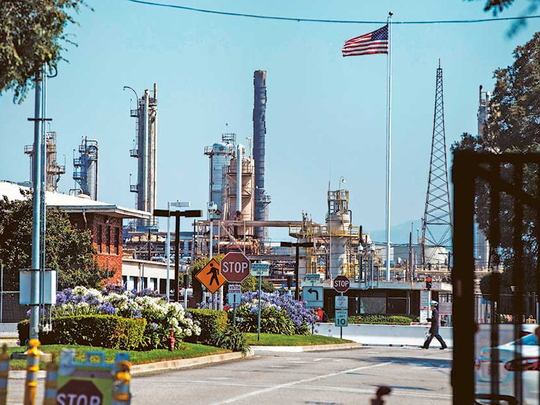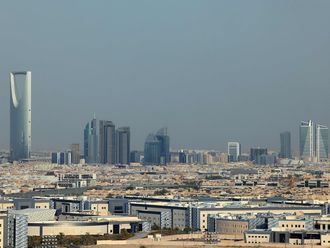
Geneva: The world’s largest oil traders are scraping the bottom of the barrel in search of their next big opportunity.
Vitol Group and Trafigura Group Pte’s Puma Energy are adding ships and storage to trade bitumen, a thick, syrupy petroleum product used to make asphalt for roads and tar for roofs. Transport of the material, traditionally by truck, train or barge from refineries to local builders, has swelled into a global marketplace as demand climbs far from the source of production.
The fight for profits from bitumen, said to come from the “bottom of the barrel” because of its weight, has been driven by fundamental changes in the market. Supply has dropped as aging refineries in Europe and the U.S. are closed or converted, while road construction in Asia and Africa has pushed up consumption. That’s created demand for massive oceangoing tankers that keep the material heated.
“It used to be mostly a small distribution business,” Chris Bake, a senior executive at Rotterdam-based Vitol, said in an interview. “Now it is more of a whole arbitrage business requiring a global reach and shipping capacity.”
Vitol, the biggest independent oil-trading house, is well-placed to meet the demand. It’s now the largest bitumen trader after teaming up in March with U.S.-based transporter Sargeant Marine Inc. Their Valt venture has a fleet of 16 bitumen and asphalt ships, some of which can handle single shipments of more than 35,000 metric tons, according to its website.
Puma, a Singapore-based unit of Trafigura, recently added four bitumen vessels and is targeting emerging Asian markets including Vietnam, Indonesia and Myanmar. The company’s 11-strong fleet can carry about 165,000 tonnes.
“We see a definite upward trend in the number of nautical miles for bitumen,” said Valt Chief Commercial Officer Nick Fay, who estimates an annual increase of about 7 percent. “All the new refineries that are getting built don’t make bitumen.”
Global annual demand is about 100 million tonnes, according to Fay, and less than 20 percent of that is currently shipped by sea in fewer than 200 ships.
European capacity
Through its VTTI subsidiary, Vitol owns the ATPC refinery in Antwerp, Belgium, one of the largest dedicated bitumen plants in Europe with a processing capacity of 3,300 tonnes a day. Vitol and Valt also own a bitumen tank in the Port of Rotterdam with a storage capacity of 30,000 tons. Puma has 500,000 tonnes of bitumen storage.
There’s little public information on the bitumen and asphalt market, making it attractive to expert traders who have seen crude and gasoline margins shrink amid increased competition and widely available data on prices, production and flows. The market’s opacity also makes it more risky, since there’s no common way to hedge against losses.
“You can expect our presence and our interest to be where there are significant opportunities and shorts in the market,” said Olof Klintholm, Puma’s global head of bitumen, referring to supply shortages.
Bitumen can occur naturally, such as in Canada’s oil sands, but is also produced as part of the refining process. When crude is heated and partly vaporised in an atmospheric distillation column, the heavier components fall to the bottom. They’re then heated again in a vacuum distillation column and bitumen is obtained from the residue.
Gunvor investment
Competitor Gunvor Group is also taking an interest. The Cyprus-based commodities company, which plans to open an office in Houston to trade petroleum products, is considering investing in the idled Perth Amboy asphalt refinery and storage facility in New Jersey, according to a person with knowledge of the matter. The 80,000-barrel-a-day plant, which has been shut since 2008, is currently owned by Buckeye Partners.
While there’s no global shortage of bitumen, the world’s largest energy traders are jumping in as the shift in production locations and increased demand from Asia create opportunities.
“There is a perception that the world is going to be more disconnected - supply and demand-wise - and we are there to help connect the dots,” Klintholm said.











